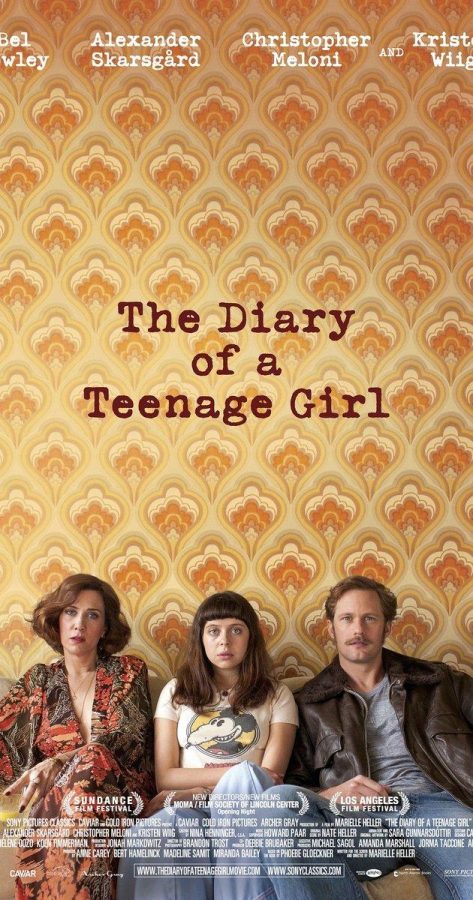With a title like “The Diary of a Teenage Girl”, some might deem the film innocent or trivial– call it an overdone concept before even watching it– but all of those disappear within the first few seconds. The film premiered in various theaters on August 7 and is based on the semi-autobiographical graphic novel of the same name by Phoebe Gloeckner. It’s a bizarre coming-of-age tale; a truthful account of a young girl’s budding sexuality; and a story about love without romance, set in 1970’s San Francisco. The heroine, Minnie Goetze, is played by the tremendous newcomer Bel Powley opposite Kristen Wiig and Alexander Skarsgård. Wiig ditches her comedic routes for drama, but does find subtle moments to include wit and humor. Skarsgård expertly parlays the line of villain and misunderstood man.
Throughout, Powley remains painfully sincere, exemplified in the opening scene, “I don’t remember being born. I was a very ugly child. My appearance has not improved so I suppose it was a lucky break when he was attracted to my youthfulness.” This quote and delivery perfectly set up the entire movie.
“Diary” centers around the sexual relationship between Minnie (Powley) and Monroe (Skarsgård), who also happens to be Minnie’s mom’s (Wiig) lover. Even with issues like statutory rape, teenage drug and alcohol use, and complicated family dynamics, the film doesn’t rely on controversy for drama. The result is a story focused on the emotions of a seemingly ordinary 15 year old girl where the viewer can form their own opinions and listen while Minnie shares hers.
This introspective point of view is something rarely seen with teenage girl protagonists. More often than not, they are hung up over a boy with cliché feelings of self-consciousness and doubt. While Minnie still has these– highlighted in hilarious scenes with Monroe where she internally debates her body and personality– nothing about her seems cliché. She seems to feed off of these stereotypes, and flip the viewers attention to how ridiculous they are. Her naiveté makes harsh moments light, and her honesty will make you think twice for questioning her actions. Even though her situation is adverse and at times outlandish, the viewer will be able to relate whether they are young or old, male or female. Minnie’s loud voice is screaming to be heard.
The thoughts she has and the phrases she writes in her diary are the ones that everyone thinks but never says aloud. She recites gems while rambling into her voice recorder, “I wonder if anybody loves me that I don’t know about,” and her mind rages while her facade stays calm, “I am better than you! You son of a…,” but she captures the most feeling within her art. Staying true to the graphic novel, animation and art are a large part of the movie. At times she’ll tangent into fantastical visions of growing wings or stomping across the city. These various dream sequences are shot in a way that perfectly reflect the groovy 70’s vibe. It is the moments where she breaks from reality, when she truly understands what reality she is creating.
Sometimes the plot can get quite uncomfortable and a little repetitive, but it quickly picks up as Minnie finds clarity and soon your emotions tangle up with hers. In one scene, I cringed, wondered why I was cringing, smiled, then cried all within one minute.
This film is rated R, much to the dismay of the author. She wanted to reach teenage girls, those that are going through similar situations as Minnie, could benefit from hearing a story like Minnie’s or as she states in her book’s dedication: “for all the girls when they have grown”. And I can see why she’s upset. Looking past all the drugs, partying, and sex is a normal girl. Powley’s portrayal of Minnie is far more normal than what teens are usually exposed to with movies starring actors that are far past their teens and in their physical prime. The best part about this story is how perfectly it captures the unavoidable frumpiness that occurs when puberty hits. Life as an average teenager is supposed to be uncomfortable and the harsh truth that this film preaches is that sometimes normal is tough to watch, but that doesn’t mean you shouldn’t see it.


